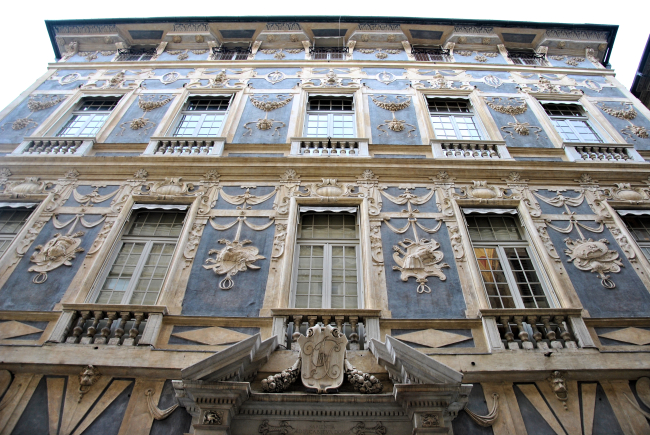Palazzo Nicolosio Lomellino
PALAZZO NICOLOSIO LOMELLINO
The Palace
The Palace was built in the sixteenth century by Nicolosio Lomellino: the architect Giovanni Battista Castello, known as il Bergamasco, created the spectacular atrium-hallway-courtyard sequence, open onto Strada Nuova, and the façade entirely decorated with stucco, unique in the street.
Why you should visit Palazzo Lomellino
In the seventeenth century, Bernardo Strozzi created the frescoes dedicated to the discovery of America, believed to have disappeared for centuries and fortunately recently discovered and restored.
The most spectacular element of the palace is the eighteenth-century Nymphaeum, which connects the street level to that of the two hanging gardens, enriched with statues, fountains and caves.
Information
The palace, privately owned, is open to individual visitors on the first Saturday of each month, with a visit to the first noble floor and the garden; It is also often home to exhibitions and other cultural activities.
- To find out all the information about the visit and to learn more about the collections, here is the link to the official website: https://palazzolomellino.org/eng/
- To learn more about the history of the Palace, here is the link to the page on the Rolli e Strade Nuove website: https://www.rolliestradenuove.it/en/rollo/14-palace-of-nicolosio-lomellino/
Useful info





